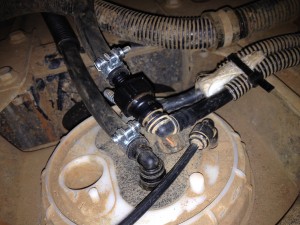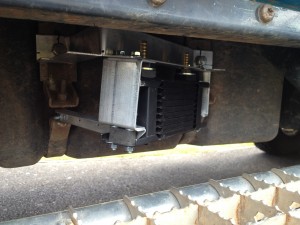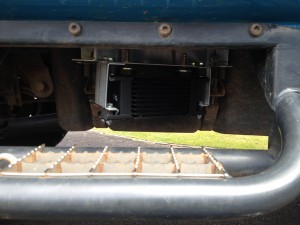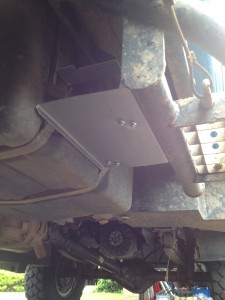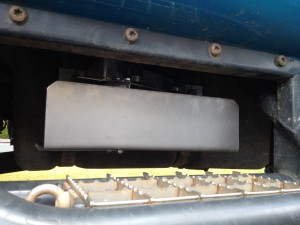Fitting a fuel cooler wasn’t on my list of required changes for my Iveco Daily 4×4. But I wondered…
Spotting the problem
Whilst driving up hills, I have often seen the engine temperature rise to just above ½ and the cooling fan cut-in. However on one occasion the engine temperature went as high as ¾ which is not normal. That evening I downloaded the ECU stored data. Analysis of the data revealed that the engine coolant temperature had not risen above the normal limits, but the fuel temperature had exceeded the normal levels.
On this occasion I had been driving up a very steep off-road track and had very low fuel quantity in the main fuel tank. My conclusions are therefore:-
- The engine temperature gauge shows a combination of the coolant and fuel temperature. If either is high, the gauge goes up; and
- When working the engine at a high power with a low fuel quantity, the return fuel heats up the remaining fuel in the tank to unacceptable levels.
To prevent this, many vehicles are fitting fuel cooler as standard. I therefore decided that fitting a fuel cooler in the return-to-tank fuel line might do the trick.
Fitting a fuel cooler
Here are the steps that I took in fitting a fuel cooler without cutting into the original pipework:
- Unplug the quick release return line connector from the fuel tank
- Use an in-line male quick-release fuel connector to plug into the return-line female connector and connect to the fuel cooler with an 8 mm fuel line
- Used an 8 mm fuel line from the fuel cooler to a female quick-release connector to plug onto the fuel tank return connector
- Mount the fuel cooler radiator behind the driver step (this location should have cool airflow, is relatively well protected in the event of a crash and, given the rock guard, should not clog up with mud or be damaged during off road travel).
Note: I took the in-line male and female quick-release connectors from an Iveco fuel line that I purchased, part number 5801301073.
- Connections into the fuel return on top of the fuel tank
- Cooler mounted behind the drivers step
- Cooler mounted behind the drivers step
- Stone and mud guard installed around the cooler
- Stone and mud guard installed around the cooler
Update Aug 2019
While staying at Overlander Oasis in Mexico (https://www.overlanderoasis.com) I took the opportunity to work with Calvin to improve the fuel cooler housing. The original cooler was getting covered in mud thrown up by the front wheel. The new design involved running an air duct back from the newly installed engine baffles and the creation on a new enclosure for the old fuel cooler radiator. The new enclosure properly protects the fuel radiator and prevents any mud from covering the radiator.
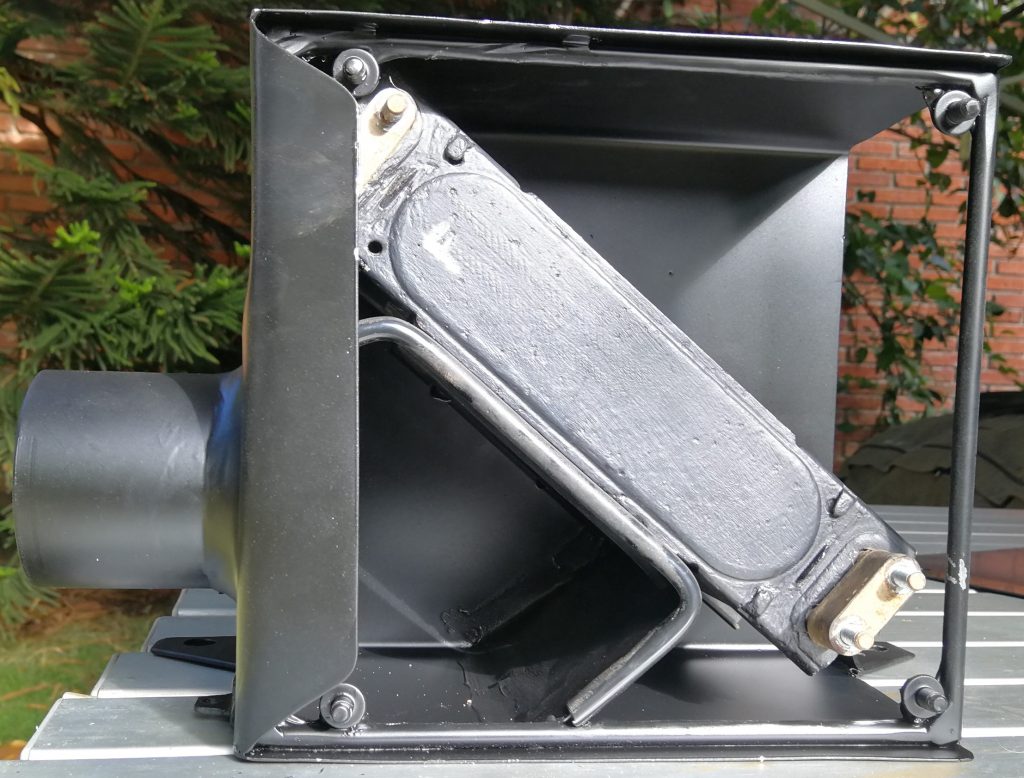
The new duct also provides a much better air flow, significantly increasing cooling performance.
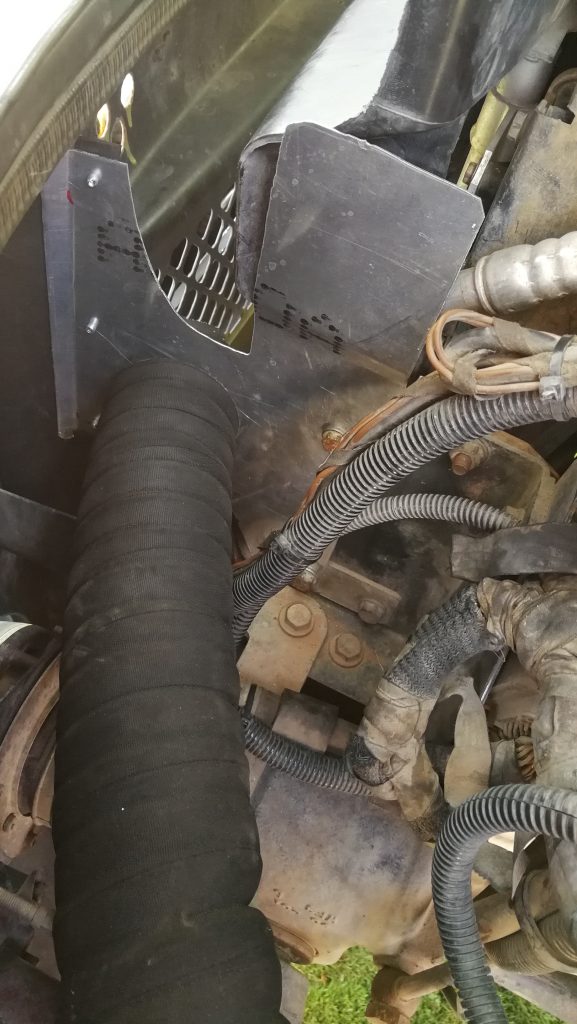
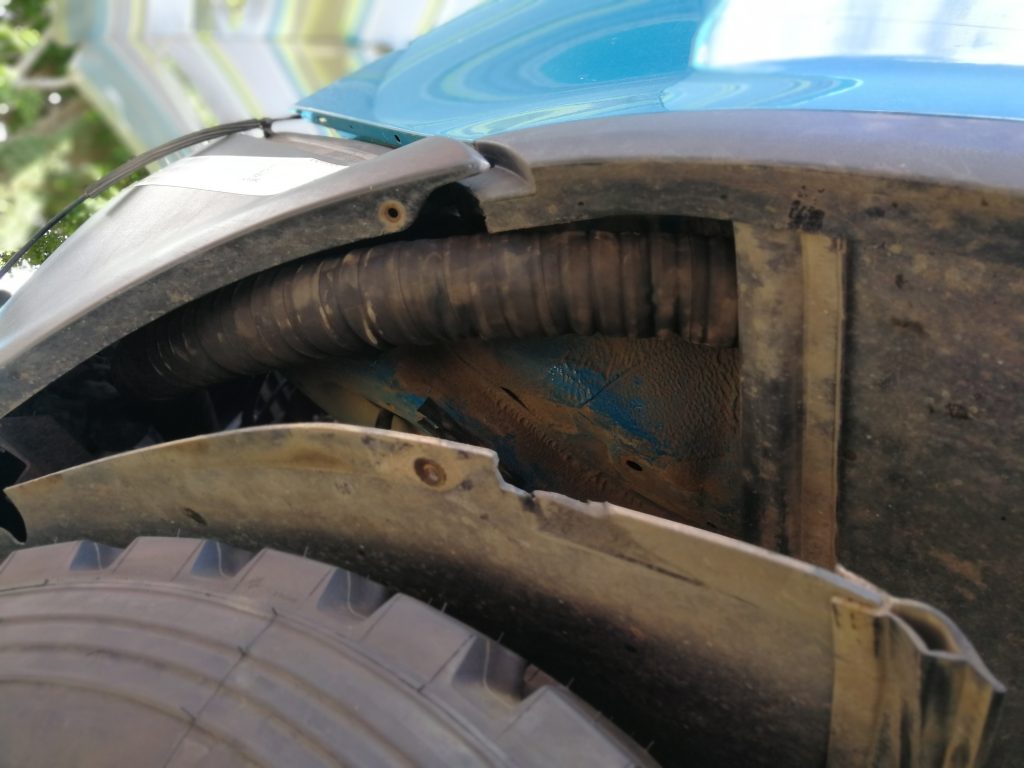
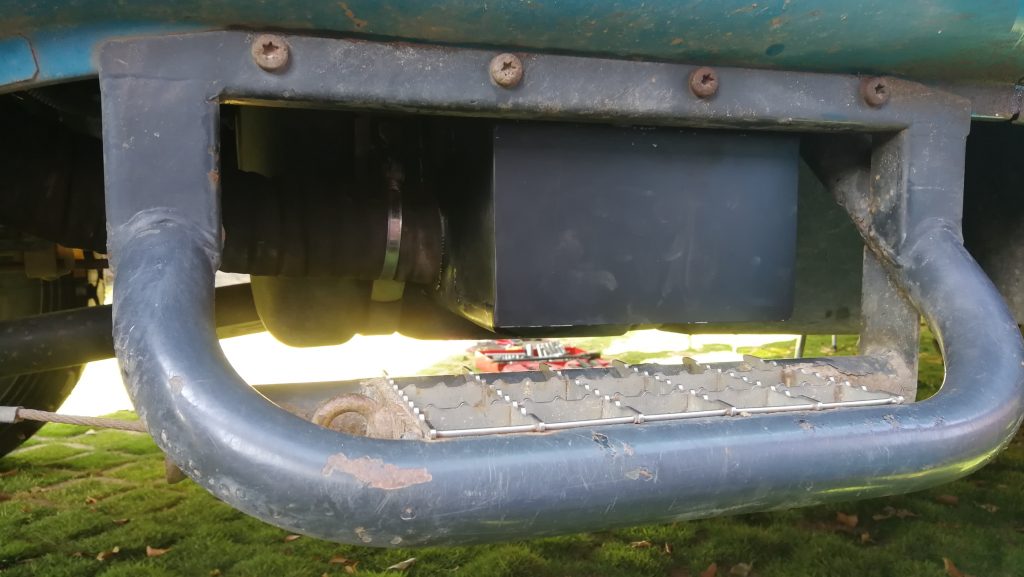
Having now test driven it for 850 km (driving from 1500m amsl to 3000m amsl on slow steep roads, then down to sea level, then back up to 2500 m amsl on fast steep dual carriageway, all with the vehicle loaded between 5800 kg and 5900 kg, with outside temperatures of 25°C to 35°C) the ECU data is showing that the changes have helped reduce the fuel heating significantly when compared to the old design: the time in the ‘60°C to 70°C band’ is reduced by 66% and there is now no time in the ‘above 70°C band’, even when working the engine hard with an almost empty tank (less than 15L of fuel remaining).

